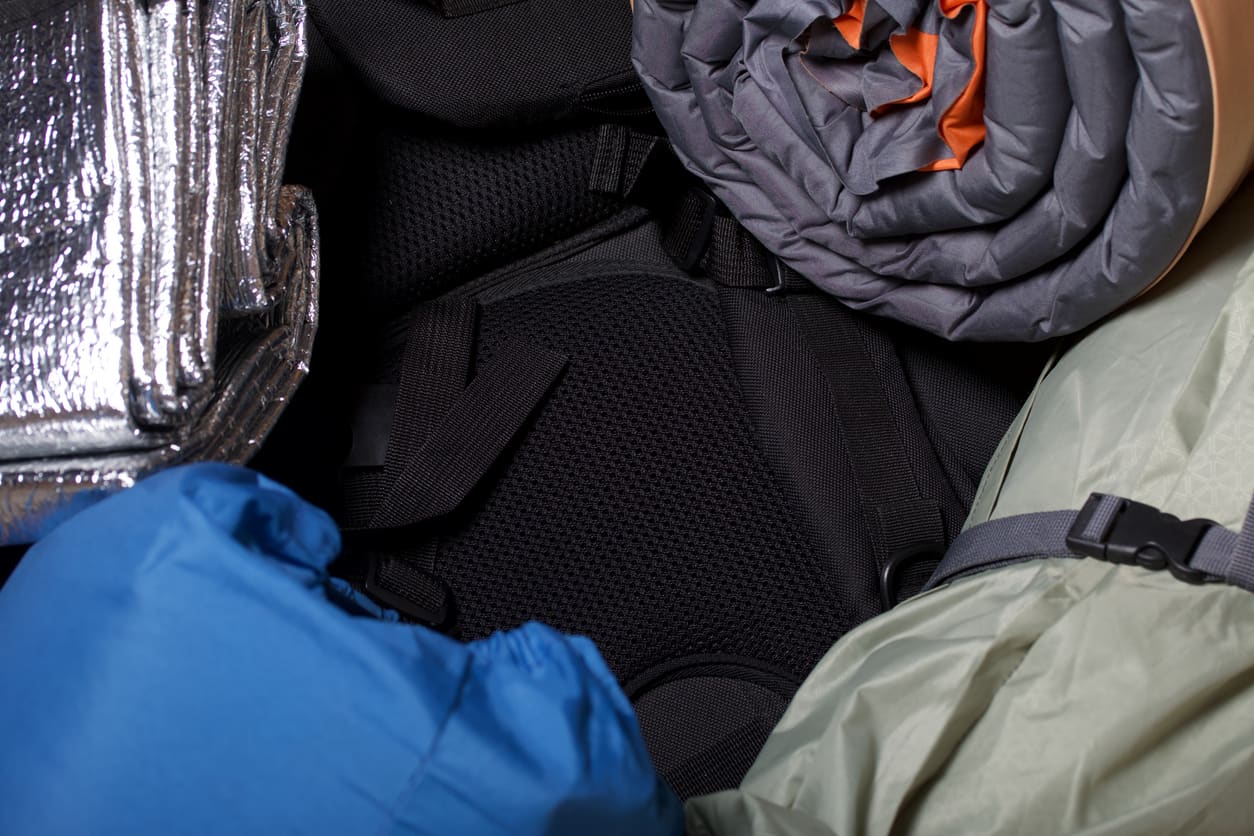Proper storage is crucial for maintaining the longevity and performance of your sleeping bag. Whether you’ve just returned from a camping trip or are preparing for the off-season, following these best practices will ensure your sleeping bag stays in top condition for years to come.
Clean and Dry First
Before storing your sleeping bag, it’s essential to ensure it’s clean and completely dry. This prevents mold and mildew growth, which can damage the insulation and fabric. If you need to clean your bag, follow our guide on how to care for and maintain your sleeping bag for detailed instructions.
Avoid Compression
One of the most important rules of sleeping bag storage is to avoid compression. Never store your bag in its small stuff sack for long periods. Compression damages the insulation fibers over time, reducing the bag’s loft and warmth. This is especially crucial for down bags, but it applies to synthetic bags as well.
Use a Large, Breathable Storage Sack
Most quality sleeping bags come with a large cotton or mesh storage sack. If yours didn’t, use a king-size pillowcase or purchase a dedicated storage sack. These allow the bag to breathe and maintain its loft. The material of your bag matters too – learn more about sleeping bag materials to understand why proper storage is so important.
Choose the Right Location
Store your bag in a cool, dry place away from direct sunlight. Avoid damp basements, hot attics, or unheated garages. The ideal storage spot is in a closet or under a bed in a temperature-controlled room of your home.
Hanging vs. Laying Flat
If you have space, hanging your bag from a sturdy hanger is ideal. This allows maximum loft and prevents any compression. If hanging isn’t an option, storing the bag flat under a bed or on a shelf is also good, provided the area is clean and dry.
Air Out Regularly
Even in storage, it’s a good idea to take out your sleeping bag every few months to air it out and redistribute the insulation. This helps prevent any moisture buildup and keeps the insulation evenly distributed.
Consider Material-Specific Needs
Different materials require different care. Down bags are more sensitive to moisture, so extra care in choosing a dry storage location is crucial. Synthetic bags are more forgiving but still benefit from proper storage techniques. If you’re unsure about what type of bag to get, check out our guide on how to pick a sleeping bag for more information.
Additional Tips
- Consider using a sleeping bag liner to keep your bag cleaner and extend the time between washes.
- If you’re storing other camping gear, like chairs, check out our guide on how to store camping chairs for more storage tips.
By following these guidelines, you’ll ensure your sleeping bag maintains its insulating properties and comfort for many camping seasons to come. Remember, a little care in storage goes a long way in preserving your gear’s performance and extending its lifespan. Happy camping!

Leave a Reply